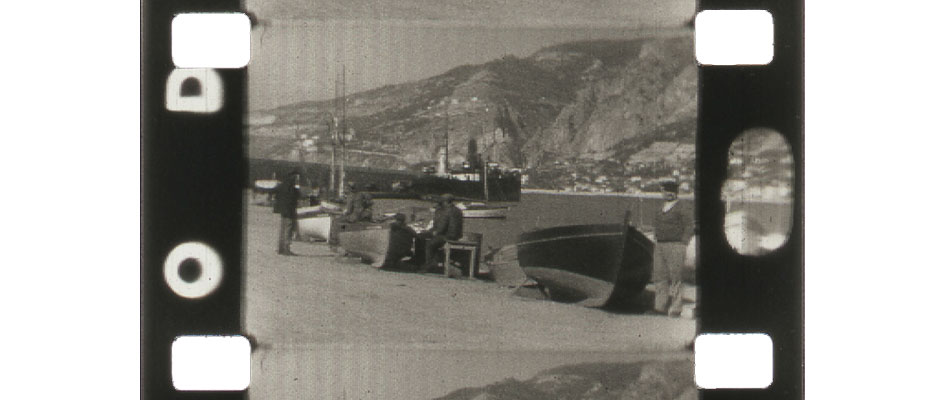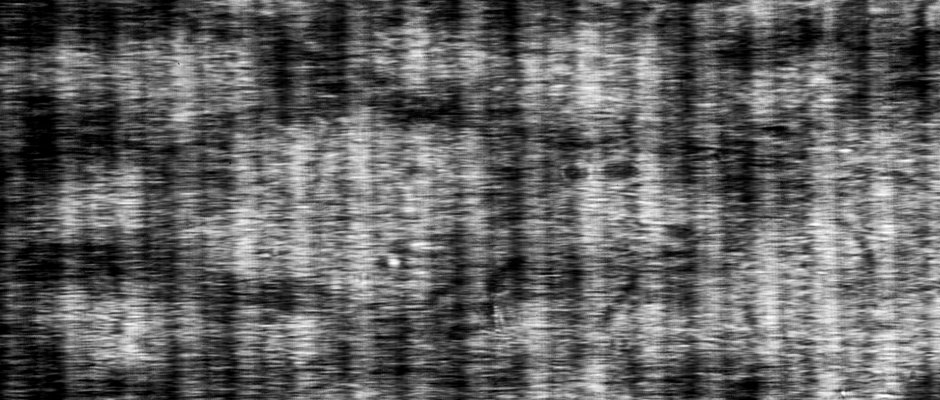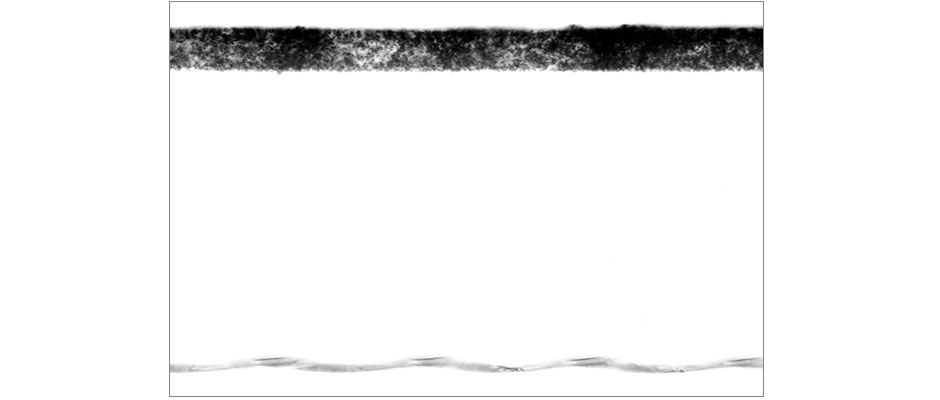


16mm reversal positive on cellulose acetate support.

Lens bands cover the full width of the film.

Microscopic lens elements are evident on the base.
Process DescriptionA three-color additive process for amateur cinematography. The film base was embossed with microscopic cylindrical lenses. During shooting, light passed selectively through a banded color filter, which was focused by the camera lens onto the tiny embossed lenses and refocused onto black-and-white reversal emulsion as separate areas of red, green, and blue color information. The same banded filter was used during projection to reveal the natural color. |
|